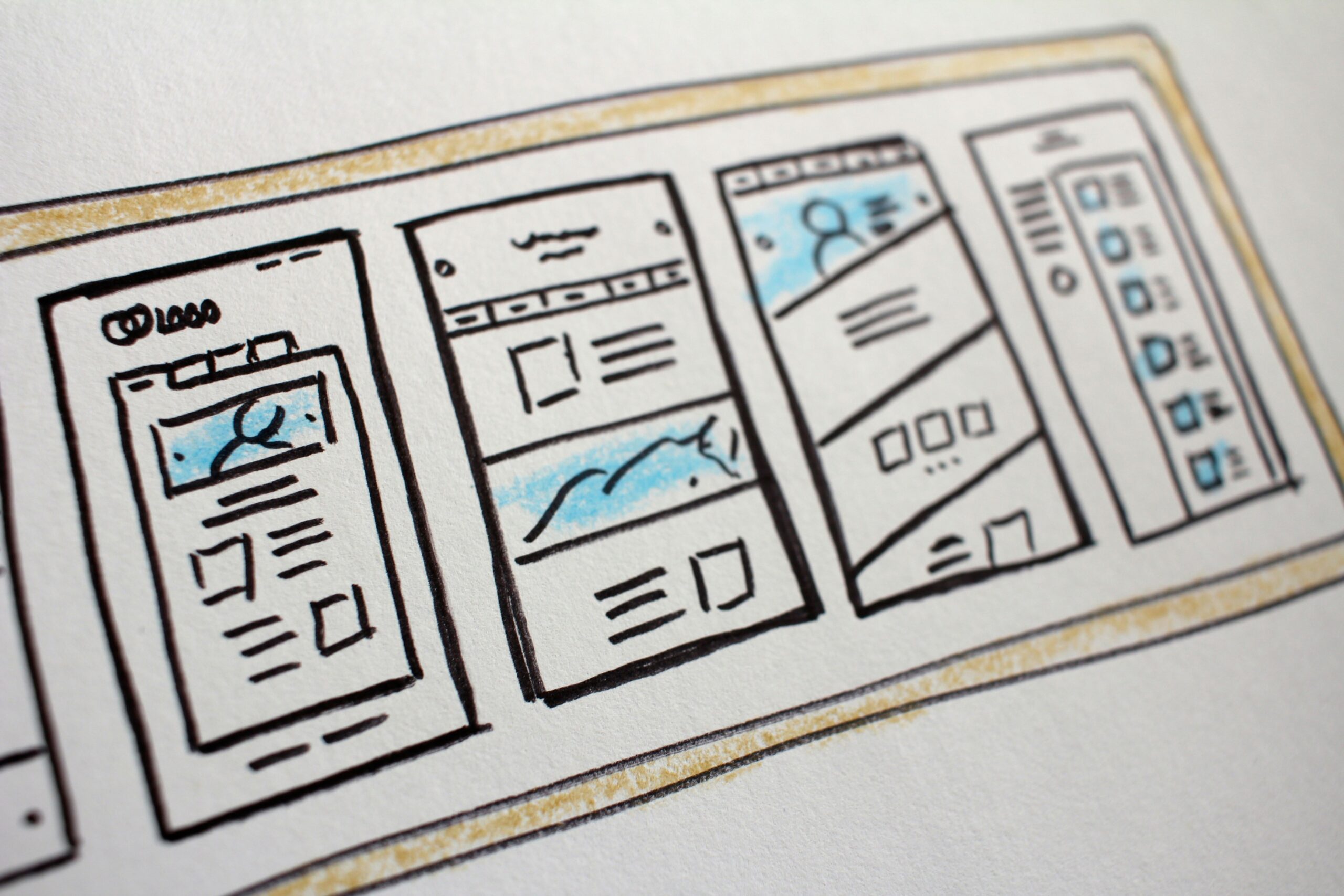
This two-part article originally appeared in the February 2024 and March 2024 issues of THE SHOP Magazine, courtesy of Barry Alt and Motorhead Digital. It is combined into one article here.
In this day and age, restoration, performance, race and restyling shops can’t afford to have a weak online presence, so staying ahead is a must.
With smart search engines and AI on the rise, consumers using multiple electronic devices, and stricter government and platform compliance and regulations coming into play, your shop needs a robust, user-friendly website and social media business accounts to keep up and stand out.
These are like digital shop windows where potential customers can check out your offerings, assess your expertise and judge your credibility.
In fact, according to a Salesforce survey, 85% of consumers do some online digging before they make a purchase or use a service. Among the most-used channels for research are websites (74%) and social media (38%).
This is why ensuring your online presence is in tip-top shape isn’t just important–it’s vital.
We’re here to help you spot the key areas where your online presence may be lacking, on both your website and social media accounts, to identify opportunities to improve them.
Rest assured—we’ll also provide the solutions to these issues, empowering you to attract new customers, boost your brand’s recognition and maintain a competitive edge in the aftermarket industry.
For this article, we’ll start with common things to go wrong with websites and how to fix them.
BE WEBSITE WISE
With the advent of DIY web development platforms, building a website has never been easier. But we all know from experience—just because something is easy to do, it doesn’t mean it’s easy to do it right.
We’ve noticed that while these platforms provide most of the tools needed to build a decent website, some of them don’t explain how to fully use their web builders or how to avoid common problems.
We’ve all heard the phrase “you don’t know what you don’t know,” and in the web development industry, what you don’t know can lead to missing key elements that contribute to your web design’s success.
Even if you do decide to hire a web developer or marketing agency, it’s still important to familiarize yourself with and take the time to address important issues. This month we’ll tackle seven issues to watch for.
Issue #1: Neglecting Your Website in Favor of Social Media
One of the most common website-related mistakes shops make is relying only on social media while neglecting their website—or not having a site at all. We see this a lot with people starting out in the automotive aftermarket.
SOLUTION: Social media can do a lot for your business—especially when it comes to growing your customer base and keeping them engaged—but it can’t do everything. Most likely you’ll need a strong, clear, user-friendly website to carry out the bulk of your business online, from booking consultations to converting casual visitors into customers.
An experienced web designer or web development agency that specializes in the automotive industry can help. Together, you can build and maintain the perfect site for your business—one that goes hand-in-hand with your social media presence.
PRO TIP: Strike a balance by using social media as a complementary tool to drive traffic to your website. Share project teasers, exclusive content and updates to encourage your audience to explore your website for more information on your automotive aftermarket services.
Issue #2: An Incomplete Site Map
Before you or a developer starts building your site, you need to understand what pages and content to include. We find so many sites that are missing key pages, making it difficult for visitors to find the information they need.
Here’s a simple example of key pages we always start out with for an auto restoration or speed shop:
Home
Our Services
- [Service]
- [Service]
- [Service]
- [Service]
- [Service]
FAQs
Photo Gallery
- Current Projects
- Completed Projects
About
- Our Facility
- Our Team
- Testimonials
- Careers
Contact
- Terms of Use
- Privacy Policy
- Cookie Notice
- Accessibility Statement
SOLUTION: First, consider what people want to know when they search for your products and services. Plan to build your site so that it answers their questions and offers solutions to the problems they’re trying to solve.
What would help them choose to work with you? An FAQ page? A gallery of builds you’re proud of?
PRO TIP: You can start building your website by creating a simple bullet list of the key things that you want your customers to know, and then make sure there are pages for these items built into your site map. If you’re stumped for ideas or think you might be missing something, take a look at what your key competitors have on their websites. What seems to be working well? What might you want to avoid? Just remember: you don’t need to copy what anyone else is doing, but sometimes it helps to have a look around to see what may or may not work for you.
Issue #3: Missing or Low-Quality Content
Quality content (copy and images) is the lifeblood of any successful website and a lack of it can seriously impact your level of perceived professionalism.
SOLUTION: Think about the story you’re going to tell across your entire site, creating great, SEO-rich copy for each page. You should also consider adding things like a blog with step-by-step DIY guides, process demos, and showcases of successful vehicle builds.
Enhance your site by including FAQs and detailed pages to offer valuable information to visitors.
Once you’ve loaded your site with valuable content, perform regular content audits to ensure accuracy, relevance and proper grammar.
PRO TIP: Encourage user-generated content, such as customer reviews and testimonials, to enhance credibility and authenticity. We mention blogs because they’re great for SEO (search engine optimization), helping your website show up more prominently in search results. Remember that anyone could enter your site on any page. Not everyone hits your home page first.
Issue #4: Lack of Clear Calls to Action
Clear and compelling calls to action (CTAs) in your website text or buttons will guide your visitors toward the action you want them to take. Unclear CTAs may lead to confused visitors and missed opportunities.
SOLUTION: Strategically position prominent CTAs and descriptive buttons at relevant places throughout the pages of your site. Ensure the language is concise, action-focused and tells users exactly what to do next.
PRO TIP: Carry out A/B testing on different CTAs to find out which ones resonate best with your audience.
Issue #5: Neglecting Search Engine Optimization (SEO)
A lack of quality SEO-related content that informs search engines about your products and services can make it extremely difficult for your audience to find your website.
I always say that Google does not care about your business, it cares about its customers—the people using its search tools.
Google’s goal is to provide the best possible experience to its users by giving them the most accurate results in their search queries. If you don’t tell Google who you are or what you do by making sure you have great content that includes keyword phrases, searches in Google will not deliver your business to potential customers.
SOLUTION: Make sure your website follows SEO best practices. This includes crafting compelling title and meta tag descriptions for each page, using SEO-rich H1 headers, optimizing your onsite copy to include important keyword phrases and optimizing images with descriptive ALT tags.
PRO TIP: Regularly monitor your website’s performance through tools like Google Analytics and Search Console. Adjust your SEO strategy based on these insights for the best results.
Issue #6: No Contact Information or Contact Form
If you expect people to hire you, they’ll need a quick and easy way to get a hold of you first. Prospective customers should have easy access to your contact information.
If your site is missing this, it can leave them frustrated—and possibly send them on to a competitor’s website.
SOLUTION: Make sure your contact details are readily available on your website. Consider placing them in the header or footer for maximum visibility and accessibility. You can even embed a scheduling tool into your site like Calendly or Book Like a Boss.
PRO TIP: Include as many contact options as possible, such as a contact form, email address, phone number and even a physical address, if possible.
Issue #7: Missing or Hard-to-Navigate Headers & Footers
Other common stumbling blocks for website visitors are poor headers and footers that aren’t properly formatted—or haven’t been included at all.
These are two key features that elevate both the look and feel of your website and its ease of navigation. Leaving these items unaddressed can often lead to users feeling frustrated.
SOLUTION: Keep your website menu simple, use clear labels, and organize your content logically. Make it easy for users to find what they want without any hassle.
We also always recommend linking your phone number in the header and making sure your logo is readable and looks great.
And remember social media profiles? Put all those social media links down in the footer.
PRO TIP: Carry out user testing or gather feedback from your audience to identify any issues with your website’s look and feel as well as how easy it is to navigate.

Issue #8: Lack of Mobile-Friendliness
In today’s mobile-centered world, neglecting mobile-friendliness is a big mistake. If your website visitors have to pinch and zoom in to see your content on a smaller screen, or if they’re unable to navigate your site on different devices, you run the risk of losing them.
SOLUTION: Make sure your website is built to be mobile-ready and works smoothly on various devices and screen sizes. Test your site across different platforms to guarantee a consistent and user-friendly experience for all.
PRO TIP: Regularly test and update your website’s mobile responsiveness to adapt to new devices and technologies.
Issue #9: Inaccessibility
Building the best possible website for your business takes more than just a slick design, compelling copy and high-quality content. You want your services to be available to the widest possible audience, so your website needs to be accessible to all visitors and to be compliant with ADA (The Americans with Disabilities Act) regulations.
SOLUTION: Consider the accessibility of each element of your website’s design. Is your font clear, and large enough to be readable for people with visual impairments? Are there audio options available? If you include video content, consider providing a transcript for those who are hard-of-hearing.
Apply these and other accessible elements to your site to ensure a smooth user experience for all. Much more about this subject can be found in our resource articles section of our Motorhead Digital website.
PRO TIP: Consider using accessibility plug-ins and tools that can help automatically find and fix common accessibility issues on your website.
Issue #10: Missing Policies & Outdated Copyright Information
I know what you’re thinking. “Nobody reads these things anyway, right?”
Still, neglecting privacy policies, terms of use and copyright information on your site can break the trust of your audience and leave you vulnerable to legal consequences.
SOLUTION: Make sure your website includes essential information like your privacy policy, terms of service and cookie policies. And if you have an eCommerce website, you’ll also need to provide clear shipping, return and warranty policies.
Additionally, make sure you’re keeping all copyright dates and information current.
Make it easy for users to find these details by dedicating an easily accessible section of your website to them and linking this section in the footer of your site.
PRO TIP: Regularly review and update your policies to align with changing legal requirements and industry standards. To make things a bit easier on your end, there are several companies that specialize in U.S. privacy laws and privacy regulations all around the world.
Issue #11: Inactive or Faulty Forms
If you’re not getting responses from submission forms on your website, the culprit may be missing SPF (Sender Policy Framework) or DKIM (DomainKeys Identified Mail) records in your domain registry’s backend.
These are a bit technical, but they’re important to set up as they tell your customer’s mail server that the email coming from your site is legit and not spam.
SOLUTION: Update and configure the SPF and DKIM records properly to guarantee that form submissions reach your inbox and that your responses reach the customer.
PRO TIP: We recommend that you—and, ideally, several of your team members—test all of your forms to see if any automatic notifications or error messages occur. Some hosting or domain name providers may be able to help you with setting up these records if you don’t know where to start.
Issue #12: Slow Loading Times Due to Bad Code or Large Files
Slow loading times can be a major turnoff for visitors to your website, making them more likely to leave—especially when they’re browsing on a mobile device. Plus, slow loading times can damage your search engine ranking, making it harder for people to find you at all.
SOLUTION: To speed up loading times, resize and optimize large image files by compressing and formatting them properly. Avoid using pre-loaders or unnecessary content.
Also, streamline your website’s code by minifying CSS and JavaScript files. These steps enhance user experience and improve your website’s performance.
If you’re DIY-ing, this might be a time to call in a developer who knows what all this means and can help you get it done without the headache.
PRO TIP: Regularly test your website’s loading speed using tools like Google PageSpeed Insights or GTmetrix.
#Issue 13: Lack of Knowledge About Website Builders
Using DIY tools like WordPress, Shopify, WIX, Squarespace or other website builders without proper knowledge can lead to poorly designed and dysfunctional websites with key elements missing or not working properly.
You can also run into major security issues if some of these tools aren’t kept up to date.
SOLUTION: Invest time learning how to use DIY tools effectively or consider seeking professional help to ensure your website looks appealing, functions correctly and caters to the needs of mobile users.
PRO TIP: Properly update, test and optimize key elements to guarantee a seamless online experience for your audience.
#Issue 14: Not Setting Up Google Analytics or Search Console
Google Analytics and Search Console are free tools that are essential to the success of your site and your business—especially if you’re also doing marketing.
Google Analytics tracks the traffic on your website, how people navigate it and how they found you.
Google Search Console not only shows traffic to your site, but also allows you to submit your SITEMAP.XML file. That means it can see what pages are on your site and when you update them.
Search Console also provides Core Web Vitals that let you know when something is wrong. Imagine getting notified the moment a page of your website is corrupted by malicious code. A tool like Google Search Console alerts you to issues like these so you can fix them as quickly as possible.
SOLUTION: Set up accounts on both platforms and connect them to your site. Monitor the data they provide to see how people are using your site and make sure it’s always running on all cylinders.
PRO TIP: Use Google Analytics to see what pages are the most popular and which ones get less traffic so you can optimize them for better user engagement.
So, keep an eye out for these common website issues to make sure your virtual storefront is as welcoming and helpful as if the customer had actually walked in your front door.
Meanwhile, there’s another half of your online presence to monitor and maximize—social media. Tune in next time to learn how to make your shop a social media sensation.



